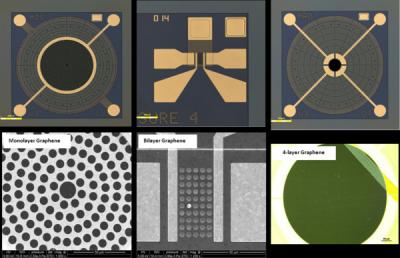Graphenea, in collaboration with industrial and academic partners (Infineon Technologies, WITec, RWTH Aachen University and Simune Atomistics), announced the successful completion of project NanoGraM that focused on nano/microelectromechanical (NEMS/MEMS) devices based on graphene. The project focused on three specific device concepts for potential future products: graphene microphones, graphene-membrane pressure sensors and graphene-membrane Hall sensors.

The target markets for these devices include portable electronics (smartphones, laptops), automotive, industrial, and smart homes, among others.
Graphenea acted as a graphene provider and assisted the project goals by developing a semi-dry transfer process for suspended CVD monolayer and multilayer graphene on cavities and holes. Graphene was successfully suspended over holes up to 500 micrometers in diameter. This line of research enabled the introduction of a new product for Graphenea: suspended monolayer graphene on cavities.
The project delivered three patent applications and at least seven scientific publications, with more in the pipeline. Apart from fabrication, characterization of large area graphene membranes was also taken to new heights, as detailed in the joint publication Noninvasive Scanning Raman Spectroscopy and Tomography for Graphene Membrane Characterization.
The project was jointly funded by Germany (BMBF) and Spain Basque Country as part of M-ERA.NET. It lasted 3 years and was worth in total ⬠1,960,244.